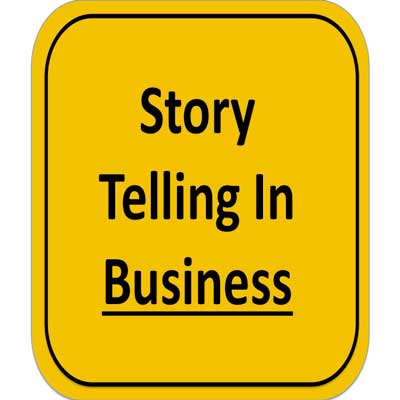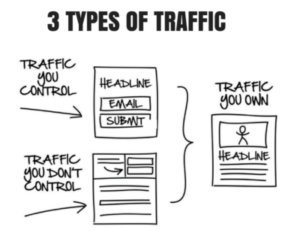 Storytelling has become a big part of how businesses communicate. You can see more and more stories being told across branding, sales, and marketing.
Storytelling has become a big part of how businesses communicate. You can see more and more stories being told across branding, sales, and marketing.
An ever-increasing number of companies now use the art of storytelling to capture their audience’s attention, communicate their values, and to position their products and services.
Humans are pre-wired to love stories, they are part of the very fabric of human communication.
Right from ancient times, when man was living in a cave, right up to the present where we walk around with smart phones in our pockets and have access to knowledge at our fingertips, storytelling has been part of human society.
Stories bring people together
In a time before the internet, when computers, TV and radio didn’t exist, and even before the printing press was invented, stories were the way in which we entertained ourselves.
They also served as a vehicle for learning. Stories were the medium through which important life lessons were communicated, taught and passed down from one generation to another.
Ancient tribes and cultures across the world all had something in common – they used to gather together and share stories. Every village had a storyteller, who would tell great tales and spark the imaginations of all who would listen.
They also served as a vehicle for learning. Stories were the medium through which important life lessons were communicated, taught and past down from one generation to another.
Stories bring people together when they contain emotions – the universal language that we can all understand.
We all understand human emotions like hope, anger, despair, courage, and fear. Stories that contain these elements allow us to connect at an emotional level, and thus create a sense of commonality and community amongst people.
Uri Hasson, profession of psychology and neuroscience at Princeton University conducted a number of studies that show that after a certain time, the brainwaves of an audience listening to a story actually get synced with the storyteller!
This is why great storytellers are able to captivate their audience and hold them in rapt attention.
With stories being able to connect us with others through the universal language of human emotions, it’s no surprise that more and more businesses are using storytelling in their marketing, sales and branding activities.
Check out our post on 3 storytelling templates you can use to boost your business.
Although it may seem complicated to create a story, it’s actually quite simple once you understand that all stories share the same 3 common components around which you story is fleshed out.
The 3 basic components of a story
1. Characters
All stories contain at least one character (known as a protagonist). Your characters act as the eyes, heart and mind of your audience. They are your audience’s window into your story world.
Characters are the bridge between you as the storyteller and your audience, which is why it is important to make sure your audience are able to relate to your character
2. Conflict
This is what makes your story engaging. Conflict is the struggle between opposing forces of good and evil, in whatever form that may take.
When you character experiences opposition they must take action to overcome it. This struggle to overcome creates the conflict, without which there is no story.
It is in the conflict that the character learns vital lessons that will carry them on to victory.
3. Resolution
This is the conclusion of the story’s plot, where loose strings are tied. It is also where you learn what happens to the characters after the conflict has been resolved.
This is where we see how the character has changed after the journey they have just been on, and how they will now live as result.
Every story you can think of from Lord of the Rings to Star Wars contains these 3 components in one form or another.
Using these components in your marketing or sales copy will also help you to connect with prospects on a deeper emotional level.
Writing stories for your business
Now you understand a bit more about how powerful stories are at connecting people and the 3 basic components of a story, its time to see how you can use stories in your business to attract more customers and make more sales.
1. Know your audience
Before you can write anything its important that you know who you are writing for. You need to understand your target market in order to know how to appeal to their emotional nature.
Remember the old adage: People buy on emotion, and justify with logic.
You can only tap into the right emotions when you understand your target audience – what are their pain points? What challenges do they face? What emotions do they want to feel once their problem is resolved?
2. Clarify your core message
What is your message? What are you trying to communicate with your audience? This will determine the objective of your story.
Perhaps you are selling a physical product, or you may be trying to raise funds for a good cause, or bring awareness to a particular issue. Maybe you’re advocating a service.
Whatever it is you are selling and trying to communicate, you must get clear on it and make it your core message.
If you can summarise your story in 10 words then you have a clear core message.
3. Determine what effect you want your story to have on your audience
Different types of stories will naturally have different effects on your audience.
What do you want your audience to do and feel when they hear your story?
- Want your audience to take action?
If you are trying to get them to take action – click a button, make a sale, give them your email address etc. then you should use a story that describes how your character, in the pursuit of a goal (this should be the same goal your audience wants to achieve e.g. weight loss) took an action (used your product or service) to get the result they wanted (e.g. their ideal body weight).
This shows your audience that they too can obtain the same results by taking the same action.
- Want to educate your audience?
Tell a trial and error story, where your character has a problem, tries various solutions, learns some valuable lessons by making mistakes along the way, before discovering the answer or solution that yields success.
By experiencing your character’s journey through the story and embedding the lessons you want to impart within the narrative, your audience share in the lessons and learn them in a powerful and effect way.
Books like “the One Minute Manager” and others in the “One Minute” series use this formula to impart valuable business lessons to their readers, in a fun and easy to learn fashion.
- Want to tell your audience about yourself?
Tell your story in a open, honest and transparent way. Use humour, and don’t be afraid to talk about your failures and shortcomings.
What challenges have you experienced?
What lessons have you learnt?
What valuable advice can you share as a result of your journey?
Your audience will appreciate you for your honesty, they will feel a greater connection with you. People do business with people they like and trust, and sharing your story in an honest way will endear you to your audience and make them like trust and buy from you.
- Want to convey brand values?
You must tell a story that your audience can relate to in terms of the characters, situations, emotions. When your audience can relate to these factors in your story, they will be able to see how the values you are communicating in the story apply to their own lives.
This is particularly important if you are communicating values that your audience consider to be different to those they currently hold.
Understanding your audience is the key to making them relate to your characters, and therefore the story as a whole.
4. Clarify your call-to-action
You must know exactly what you want your audience to do once they have heard your story, and you must make it clear to them by having a clear call-to-action (CTA).
Don’t assume that your audience will always know what they are supposed to do next – make it clear and obvious so there is no confusion.
If you want them to click a link then make it obvious by using a clear CTA like: “Click here for more information”. Perhaps you want them to share your post on social media, so include easy social sharing icons and use a “Share now” CTA.
Remember, your call-to-action is the reason why you have told them your story in the first place!
They have connected with you, your character, or your brand so they are now in a more receptive mood. Take advantage of this by telling them what action you want them to take next.
Summary
Stories connect us and are effective at getting people to resonate with an idea, lesson, and values. They can also inspire audiences to take action.
When used effectively, stories can help to educate your audience about your brand, product or service and inspire them to take action like making a purchase, or subscribing to your email list.
Without the use of stories, it can be difficult to connect with your audience on an emotional level where they feel compelled to follow through on your call-to-action. Boring, drab, corporate sales copy just doesn’t have the ability to touch people emotionally and move them into action.
By creating a story and incorporating the 3 components of character, conflict, and resolution, and making them relevant to your audience you will have a shortcut to the button inside your audience’s head that moves them in to taking the action you want.
Here are 3 storytelling templates you can use to help you outline your stories for maximum effect.
Start creating stories, and improve the way you connect, market and sell to your audience.
[thrive_leads id=’2989′]




